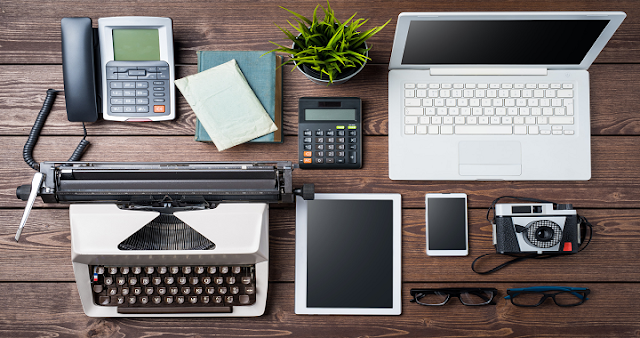
The Evolution of Devices From Simple Tools to Complex Gadgets
- Gordon Matthew Thomas Sumner
- 0
- Posted on
Table of Contents
ToggleThe Evolution of Devices A Journey through Time
Devices, in their various forms, have played a significant role in shaping human history and society. From the earliest tools crafted by our ancestors to the cutting-edge gadgets that define our modern world, devices have evolved in remarkable ways. This article takes you on a journey through time, exploring the fascinating evolution of devices, from simple tools to complex gadgets, and delves into their profound impact on our lives today.
From Ancient Tools to Modern Gadgets A Historical Perspective
Devices have been an integral part of human existence for millennia. In prehistoric times, our ancestors relied on basic tools like stone axes and flint knives for survival. These primitive devices were essential for hunting, gathering, and crafting essential items. Over time, humans developed more sophisticated devices, such as the wheel and the plow, which revolutionized agriculture and transportation.
The invention of the printing press in the 15th century marked a significant turning point in the history of devices. Johannes Gutenberg’s revolutionary device made it possible to mass-produce books, spreading knowledge and information like never before. This device laid the foundation for the dissemination of ideas and the birth of the modern information age.
As the Industrial Revolution swept the world in the 18th and 19th centuries, devices became increasingly complex and diverse. Steam engines, telegraphs, and mechanical looms transformed industries and societies. Devices were no longer limited to tools for manual labor; they had become engines of progress and innovation.
The Digital Revolution Devices in the 21st Century

The 20th century saw the birth of electronics and the beginning of the digital age. Devices transitioned from mechanical to electronic, and the invention of the transistor in the 1940s paved the way for the development of modern computers. The first electronic computers were massive, room-filling machines with limited capabilities. However, they laid the groundwork for the computing revolution that was to come.
In the late 20th century, devices such as personal computers, smartphones, and the internet began to reshape the world. The advent of the World Wide Web in the 1990s brought about unprecedented connectivity and access to information. These devices revolutionized communication, business, and entertainment, transforming the way we live and work.
The 21st century witnessed an explosion of devices, from smart TVs and wearable fitness trackers to autonomous vehicles and artificial intelligence (AI) assistants. These devices are becoming increasingly integrated into our daily lives, automating tasks, providing convenience, and enhancing productivity. For example, smartphones have evolved from basic communication devices to multi-purpose tools that encompass photography, navigation, social networking, and much more.
The Impact of Devices on Society and Daily Life
The proliferation of devices in the modern world has had a profound impact on society and daily life. Let’s explore some key areas where devices have made a difference:
- Communication: Devices have revolutionized communication, allowing people to connect instantly across the globe. Social media platforms, messaging apps, and video conferencing tools have brought friends, families, and colleagues closer together, even when physically separated.
- Healthcare: Medical devices have advanced significantly, enabling earlier diagnosis and more effective treatment. Devices like MRI machines, pacemakers, and wearable health monitors have improved patient care and outcomes.
- Education: Devices have transformed the way we learn. Online courses, e-books, and interactive educational apps have made learning accessible to people of all ages and backgrounds.
- Entertainment: Devices have created new forms of entertainment, from streaming services that offer on-demand access to movies and TV shows to virtual reality (VR) devices that immerse users in interactive digital worlds.
- Work: Devices have reshaped the workplace, enabling remote work and increasing productivity. Laptops, smartphones, and collaboration tools have made it possible to work from virtually anywhere.
- Transportation: Devices have revolutionized transportation with innovations like electric vehicles, autonomous cars, and ride-sharing apps. These developments aim to make transportation more efficient, sustainable, and convenient.
- Home Automation: Smart devices have entered our homes, allowing us to control lighting, temperature, security, and more with the touch of a button or a voice command.
- Environmental Impact: Devices have both positive and negative environmental impacts. While they enable energy-saving technologies and sustainability efforts, the production and disposal of electronic devices contribute to electronic waste (e-waste) challenges.
Devices have come a long way from the primitive tools of our ancestors to the sophisticated gadgets that define our modern era. The evolution of devices reflects humanity’s ingenuity, adaptability, and quest for progress. As we continue to innovate and integrate devices into our lives, it is crucial to consider their societal and environmental impacts. Understanding the history and evolution of devices allows us to appreciate their significance in shaping our world and empowers us to make informed choices about their use and development in the future.
